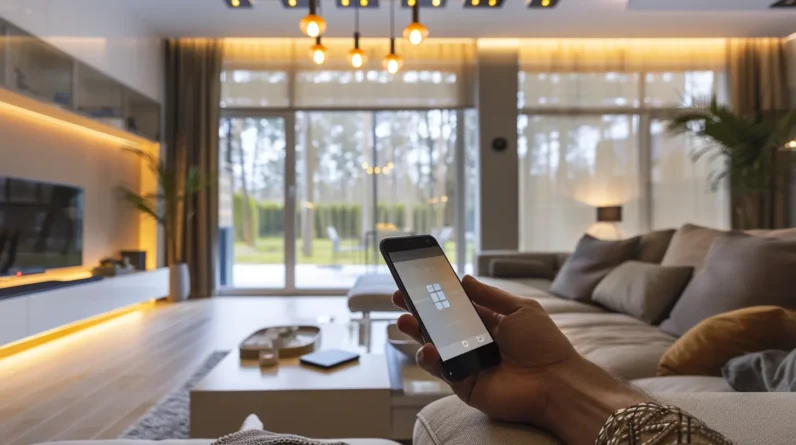
When we’re selecting smart home devices, cloud integration serves as a critical foundation that determines our system’s overall effectiveness. We’ll need robust cloud platforms to enable seamless device communication, maintain security protocols, and execute sophisticated automation routines. Cloud integration lets us access real-time monitoring, multi-device synchronization, and automatic updates while ensuring our data remains securely stored and efficiently managed. Through platforms like AWS IoT, Google Cloud IoT, and Azure IoT, we can build a truly interconnected ecosystem that scales with our needs. Understanding these cloud capabilities will illuminate the full potential of your smart home investment.
Understanding Smart Home Cloud Platforms
While smart home devices can operate independently, cloud platforms serve as the central nervous system that allows seamless integration and advanced functionality across connected devices. These platforms process data, manage device interactions, and facilitate remote access through secure protocols.
We need to take into account three key aspects when evaluating cloud platforms: compatibility, reliability, and security infrastructure. Major platforms like Amazon AWS IoT, Google Cloud IoT, and Microsoft Azure IoT provide robust APIs, allowing devices to communicate effectively. They handle authentication, encryption, and data synchronization across multiple devices and services.
Each platform offers distinct features: AWS excels in scalability, Google emphasizes AI integration, and Azure provides enterprise-grade security. When selecting devices, we must guarantee they’re compatible with our preferred cloud ecosystem to maintain consistent functionality and seamless automation capabilities.
Cross-Device Communication and Compatibility
Through advanced protocols and standardized interfaces, smart home devices communicate across different manufacturers and platforms to create a unified ecosystem. We’re seeing major improvements in how devices from different brands work together, thanks to cloud-based integration services that handle the complex task of protocol translation and data synchronization.
– Matter protocol enables seamless connectivity between devices regardless of their brand or platform
– Cloud-to-cloud APIs allow direct communication between different manufacturers’ cloud services
– WebRTC and MQTT protocols facilitate real-time device interactions and data streaming
– Hub-based systems act as translation layers between incompatible device protocols
When we select smart home devices, we must consider their compatibility with existing protocols and standards. Cloud integration services now make it possible to bridge communication gaps between previously isolated devices, creating robust automation scenarios across diverse hardware ecosystems.
Security in Cloud Connected Devices
The interconnected nature of smart home devices brings security to the forefront of cloud integration considerations. We must implement multiple layers of protection to safeguard our connected devices, starting with end-to-end encryption for all data transmissions between devices and cloud servers.
We’ll need to regularly update firmware and security protocols to patch vulnerabilities and strengthen our device ecosystem against emerging threats. Multi-factor authentication, secure boot processes, and isolated device networks create essential barriers against unauthorized access. Additionally, we’re implementing role-based access controls to manage user permissions and monitoring systems to detect unusual activity patterns.
Let’s guarantee our cloud-connected devices maintain encrypted local storage and secure API endpoints. We can’t overlook the importance of regular security audits and compliance checks to maintain robust protection across our entire smart home network.
Remote Access and Control Benefits
Remote accessibility stands as a cornerstone benefit of cloud-integrated smart home systems, enabling users to monitor and control their devices from anywhere with an internet connection. We’ve found that cloud integration transforms standard home automation into a dynamic, responsive ecosystem that adapts to our real-time needs.
– Real-time monitoring and instant notifications let us track home security, energy usage, and environmental conditions
– Multi-device synchronization guarantees our automation rules work cohesively across different platforms and manufacturers
– Automatic system updates and feature deployments keep our devices current without manual intervention
– Data-driven insights help us optimize our home’s efficiency through usage patterns and predictive automation
Through cloud connectivity, we’re able to implement sophisticated control scenarios that wouldn’t be possible with local-only solutions, making our homes more responsive and efficient while maintaining operational continuity.
Data Management and Storage Solutions
Thorough data management and storage solutions form the backbone of cloud-integrated smart home systems. We’ll find that cloud platforms offer scalable storage capabilities that adapt to our growing data needs, while maintaining efficient organization of device logs, user preferences, and automation rules.
Cloud services utilize distributed storage architectures that guarantee our smart home data remains accessible and secure. We’re able to leverage automated backup systems, data encryption protocols, and redundant storage solutions to protect against hardware failures or data loss. Through efficient data compression and intelligent caching mechanisms, we can optimize storage utilization while maintaining quick access to frequently used information.
When we implement proper cloud storage solutions, we’re establishing a robust foundation for data analytics, device learning patterns, and system-wide improvements that enhance our smart home’s performance and reliability.
Conclusion
While local smart home control offers immediate response, cloud integration delivers the robust connectivity and advanced features we’ve come to expect. We can’t ignore the critical balance between offline functionality and cloud-based benefits. By prioritizing platforms with strong cloud infrastructure, we’re investing in homes that are both future-proof and immediately functional. The right cloud integration transforms isolated devices into a cohesive, intelligent system that evolves with technology.







